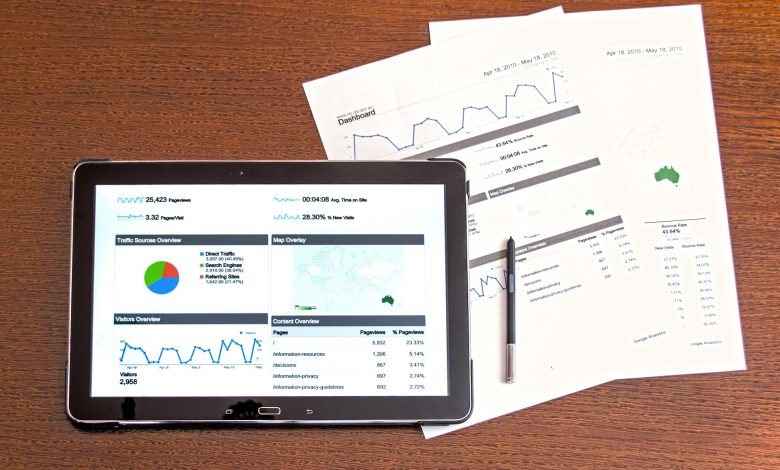Basic Guidelines for Investing

Investing is so much more than putting money into the stock markets and other investments. Investing in yourself should be seen as a lifestyle. It is about how much money you spend monthly, what kind of debt you carry, and mostly, it is about your mindset. To really get ahead in life, all of your financial decisions should work in harmony with how you want to live the life you want while making money for your future. In this article, we discuss basic principles and guidelines to help you learn about investing in yourself.
Pay Yourself First
The first thing most people do when they get paid is to pay off any outstanding bills. We understand that bills are owed by a specific date and not paying them can have dire consequences. In order to really get a hold of your financial future, apply this same principle to yourself. Try and shift your mindset into thinking that paying into your own savings is like a bill that must be paid and not doing so has dire consequences.
A great way to pay yourself first is to set up an automatic weekly transfer with your bank. Set up an amount that works within your budget. If you are working with a limited budget, this rule still applies to you. It can be tough to make ends meet when living paycheck to paycheck. Even though all of your money is likely accounted for, saving some of your income is still very important. The amount you transfer is not as important as the fact that you are doing it. After a little while, you won’t even notice that money leaving your account because you get used to it. What you notice quickly, though, is your savings account growing. Start by transferring what you can afford, and then, increase the amount as you become more comfortable with your new budget.
Always remember, you are the most important bill you have. Pay yourself first.
Set Long Term Goals
It’s great to have money set aside, but where is it going? How much do you need? How much do you need to put away each month? These are all critical questions to address when taking control of your investments. The first step to planning how much and where to invest is by setting long term goals. Perhaps you want to buy a house. Or perhaps you are an avid traveler. Maybe you want to have kids and need to prepare for their post-secondary education. Or maybe your biggest concern is when you can retire. Once you know your long-term goals, you can make a plan for how to get there. Start by figuring out how much money is required in total. Then, set out a timeline for when you need the investment to reach its total amount. From here, you can assess how much money you need to put away each month to get there.
Some investments may need to grow quickly, whereas others can mature over time. This is why it is necessary to plan with the end goal in mind. What you want to do with your money should guide all of your investment decisions.
Set Short Term Goals
Buying a house, retiring, and paying for education tend to be long term goals. The thing is, not all investment goals need to be for some time in the faraway future. There are many short term financial goals that require short term investments. For example, maybe you want to go on a family vacation in the next three years. Or perhaps you are looking to do some repairs to your home sooner rather than later. It is just as essential to make informed choices when dealing with short term financial goals as it is with long term ones. The best way to achieve these is to put your money into short term investments. Simply putting money into a savings account is not enough; it is not making your money work for you. Talk to your financial planner. They can help guide you in which short term investments are most likely to do well for your needs.

Understand Your Risk Tolerance
Investing of any sort comes with risk. The market can take unexpected twists and turns, creating a certain degree of unknown results. Some people are incredibly comfortable with taking risks. Others are the slow and steady type. Knowing this about yourself can help create a guide as to how to invest your money. More volatile investments are likely to pay off with higher returns. The problem here is that they also may fall much further. Ask yourself how comfortable you are with that before investing large amounts of money into high-risk investments.
If you are new to investing, consider taking risk assessment quizzes. You may think you are comfortable with one type of investment, only to realize that it is not for you. Many free online resources can show you what type of investment risk taker you are. If you are working with a financial planner, they can also do a risk assessment with you.
Remember, your investments are not set in stone. While it is usually best to invest long term, if you are very uncomfortable with your investment profile, it is possible to make changes.
Be Wary of Taking on Too Much Debt
Your overall financial health and investment plan is dictated by the amount of debt you carry. Debt is a natural part of a person’s financial story. Most people take on debt to buy a home, purchase a car, make renovations to their home, or to cover an unexpected expense. While there are many reasonable grounds for taking on debt, you should always be aware of how that affects your financial story.
When you carry a lot of debt, this ties up your money. When large portions of your income go into paying down debt, there is less leftover to use and invest. Large amounts of debt also take a long time to pay down. The more you take on, the longer it takes to pay it back,
A large number of consumer debt, also known as bad debt, may limit the amount you can borrow for good debt. For example, getting a mortgage to buy a home is considered good debt. Eventually, this debt turns into equity as you pay down the house. At the end of the debt period, you have a home that is worth a significant amount of money. However, the amount a bank allows you to pay for a home is limited based on the amount of consumer debt you carry. The more you owe on other loans, the less you can take out for your mortgage. Not only this, but too much debt can be absolutely crushing. Managing your debt load properly is imperative to your financial and investment success.
Invest in an Emergency Fund
We have all heard the saying ‘saving for a rainy day.’ This is extremely important when creating your investment portfolio. Unexpected expenses pop up out of nowhere, and you need to be able to deal with them effectively. Not having liquid financial means to face the emergency can lead to significant financial setbacks.
Your emergency fund should be put into an investment that is reliable and is liquid. This means: Do not invest emergency money in high-risk stocks. You want an emergency fund to be there when you need it. A high-risk investment does not guarantee that the money is there. A high-interest savings account, however, is an acceptable place to put this money to let it grow. Your financial advisor may have other suggestions for secure places to invest that money.
The other component that is the money should be liquid. This means the money should be able to be drawn down quickly. For example, an investment in real estate would not be good here. Selling a piece of property takes a long time; therefore, the money invested here is not considered to be liquid.
Emergency funds are crucial to your overall financial health and should be readily considered when building your investment portfolio.

Live Below Your Means
It can be very easy to get swept away with all the great things you can buy. When dealing with your investments and financial health, it is essential to be able to resist those temptations. Putting your money into consumer goods rather than financial investments can get you in a whole heap of trouble. It is incredibly important to spend your money wisely. Just because your friends or neighbors buy a new boat, it does not mean you need a boat as well.
Living beyond your means is one of the quickest ways to become financially ill. This is when you spend more each month than you bring in. While this may seem sustainable for some time, overall, it is detrimental. Most people live beyond their means by way of taking on extra debt. Small monthly payments make large purchases seem possible. The problem is that those low payments are usually tied to hefty interest charges. Interest is excellent when being used for making money, but it is awful when it is being charged against you. Avoid as much interest as you possibly can. Any money that is tied up in interest and debt is money that you cannot put into your investment portfolio. If you cannot afford something now, save up and buy it now. Avoid buying now and paying later whenever possible. Your goal is to spend less than you make and invest the difference.
Develop a Reasonable Budget
Investing in your future requires consistent financial maintenance. Not only does it require the monitoring of your long-term investments, but it also requires being on top of all of your day-to-day finances. Working within a planned budget helps to allow for extra money to be put into long term investments. The goal is for all of your finances to work in harmony so that immediate expenses are covered while leaving enough money for your future.
Start by creating a reasonable budget that you know you can stick to. Write down all of the expenses you encounter regularly. Take your time to make sure that you do not forget anything. These expenses include all costs associated with housing, such as rent or mortgage payments, utilities, and condo or maintenance fees. Then you need to calculate the other expenses related to the home.
Think of television, internet, and phone bills. From here, think about all the other expenses in your life. Don’t forget bank fees or monthly subscriptions you never use but come out of your account. Once you know what you spend, subtract that from your monthly income. Any sort of surplus should be used for your wants and your extra investments.
Come up with a consistent amount to invest each month. Going forward, this amount should be considered a monthly payment that you cannot miss. Looking at your investment amount as non-negotiable is one of the best ways to ensure you are continually growing your investments to make a secure financial future. Also, knowing exactly how much you need to spend each month helps to keep your extra spending in check. Mastering these habits leads to a healthy financial future.
Invest in a Car with Finances in Mind
The purchase of a vehicle is both an investment and a liability. A lot of money goes into the purchase, operation, maintenance of a vehicle. While most people find a vehicle to be a necessary investment, there is a huge cost that comes along with it. These costs need to be considered before investing your hard-earned money in a vehicle.
Commercials would tell us that the most essential feature of a vehicle is how it looks when being driven and that features such as a navigational system, a backup camera, and internal entertainment systems are what a person should invest in. This could not be farther from the truth. When investing in a car, the important things you should take into consideration are longevity, fuel efficiency, and required maintenance. Find out how much life the car has left. If it is new, this is likely not much of a concern. But if it is pre-owned, the year of the car and the mileage already on the car should be determining factor. Obviously, the more a car has been used, the less life it has left.
The second important factor is fuel efficiency. The cost of fuel is a significant factor in a monthly budget. As a general rule, the bigger the engine, the more gas the car requires. This should be a factor in your decision making. Keep in mind that, the more you pay to fuel your car, the less money you have to spend elsewhere.
The final determining factor is maintenance. Some cars tend to break down more than others. Some cars also cost more to maintain than others. Do your research, and find out what other consumers say about their cars. Knowing what amount of expenses you can expect over the lifetime of your vehicle can help you make the best financial investment with the highest possible return.
Do not be fooled; a car is a depreciating asset. While it brings many luxuries, the cost to run it is significant. Do your research and make smart financial decisions when investing in a vehicle. Remind yourself that it is not about how cool you look driving; it is about how much it costs you to do so.

Diversify Your Investments
Have you ever heard the saying, ‘Don’t put all of your eggs in one basket’? This principle applies to investing. Imagine you put all of your money into one type of stock. Over time, the stocks fluctuate but are relatively stable. Then one day, the market plummets, and your stocks quickly start losing value. Then, all of a sudden, your investment has barely any value. What happened? What are you going to do? At that point, there is not much you can do: either hold on and hope the market turns around, or sell off what you have remaining and rebuild from basically nothing. The unfortunate truth is that the stock values are beyond your control. However, there are ways to mitigate potential losses.
One of the most basic principles here is to diversify your investment. Spread your money around by choosing a variety of stocks and types of investments. Based on your comfort level with risk, choose a mix of investment options that match your needs. For example, choose a few low-risk stock options, a few medium risk options, and if you are open to taking a risk, a high-risk option. The most stable types of investments grow your money slowly but surely. The volatile options are high risk/high reward. While it can be very tempting to choose this option, remember that, the higher you climb, the higher you have to fall. This is why it may be a good idea to work with a financial advisor. They can lead you down the right path and help mitigate problems that arise.
Review Your Investments Regularly
Everyone knows that the investment market can change in a heartbeat. Because of this, it is important to monitor your investments. However, it should be noted that, just because a stock may not do well for a period of time, it does not mean you should necessarily sell. The way to make money on the stock market is to invest for the long term. Most financial advisors tell you to ride the wave. The long-term payout usually is worth it.
There are more reasons to review your investments regularly, though. This is because life goes through significant changes. Maybe you are getting married soon. Suddenly, your investment needs to go from that of one to two. Or perhaps you are hoping to switch careers and go back to school. Suddenly, your financial needs are going to change. This is why it is always important to review your investments. Find out if your portfolio still matches your financial and life goals. If it does not, make the appropriate changes. If it does, continue on the path you are on and check-in again at a later date.
No matter where you fall into the financial spectrum, investments play an essential role in your overall wealth. Investing your money means making your money work for you. Simply putting money into a savings account is not good enough. Use these basic principles to guide your investment decisions. You and your family should be the most important factor in decision making. Whenever you spend or invest your money, ask yourself – does this benefit my family and me? If the answer is ever no, then do not invest. If the answer is yes, consider all other important factors to make the best investment decision.



